MATH 134 -- Intensive Calculus for Science 2
March 21, 2001
Taylor Polynomial Demo
Taylor polynomials for
![]() at
at
![]()
> p2:=convert(taylor(cos(x),x=0,3),polynom);
![]()
> p4:=convert(taylor(cos(x),x=0,5),polynom);
![]()
> p6:=convert(taylor(cos(x),x=0,7),polynom);
![]()
> plot({cos(x),p2,p4,p6},x=-Pi..Pi);
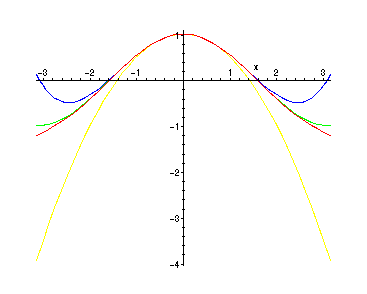
Here the
green
graph is
![]() , the
yellow
graph is
, the
yellow
graph is
![]() , the
blue
graph
, the
blue
graph
is
![]() , and the
red
graph is
, and the
red
graph is
![]() . Intuitively, it is clear that the approximation
. Intuitively, it is clear that the approximation
of
![]() by
by
![]() is getting better as
is getting better as
![]() increases. We can make this more precise in
increases. We can make this more precise in
the following way. The function
![]() gives the absolute value of the
gives the absolute value of the
error in the approximation of
![]() by
by
![]() . For all
. For all
![]() <= x <=
<= x <=
![]() the error for
the error for
![]() is less than .001 =
is less than .001 =
![[Maple Math]](images/Taylorpolys20.gif)
> plot(abs(cos(x)-p2),x=-Pi/8..Pi/8);
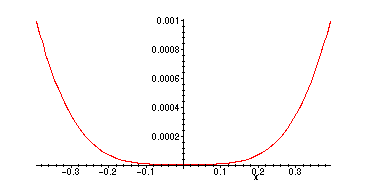
The error for
![]() on the same interval is much smaller -- at most
on the same interval is much smaller -- at most
![[Maple Math]](images/Taylorpolys23.gif)
> plot(abs(cos(x)-p4),x=-Pi/8..Pi/8);
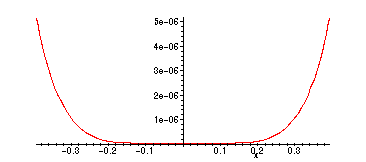
Moreover, the interval where the error with
![]() is at most
is at most
![[Maple Math]](images/Taylorpolys26.gif) is larger:
is larger:
> plot(abs(cos(x)-p4),x=-0.95..0.95);
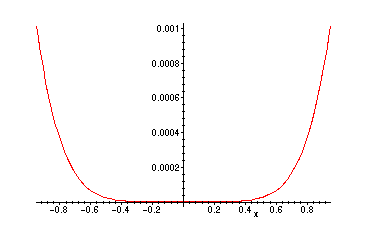
Similarly with
![]() , the error on this interval is smaller:
, the error on this interval is smaller:
> plot(abs(cos(x)-p6),x=-0.95..0.95);

and the interval on which the error with
![]() is at most
is at most
![[Maple Math]](images/Taylorpolys31.gif) gets larger:
gets larger:
> plot(abs(cos(x)-p6),x=-1.6..1.6);
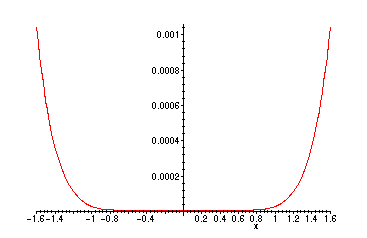
>